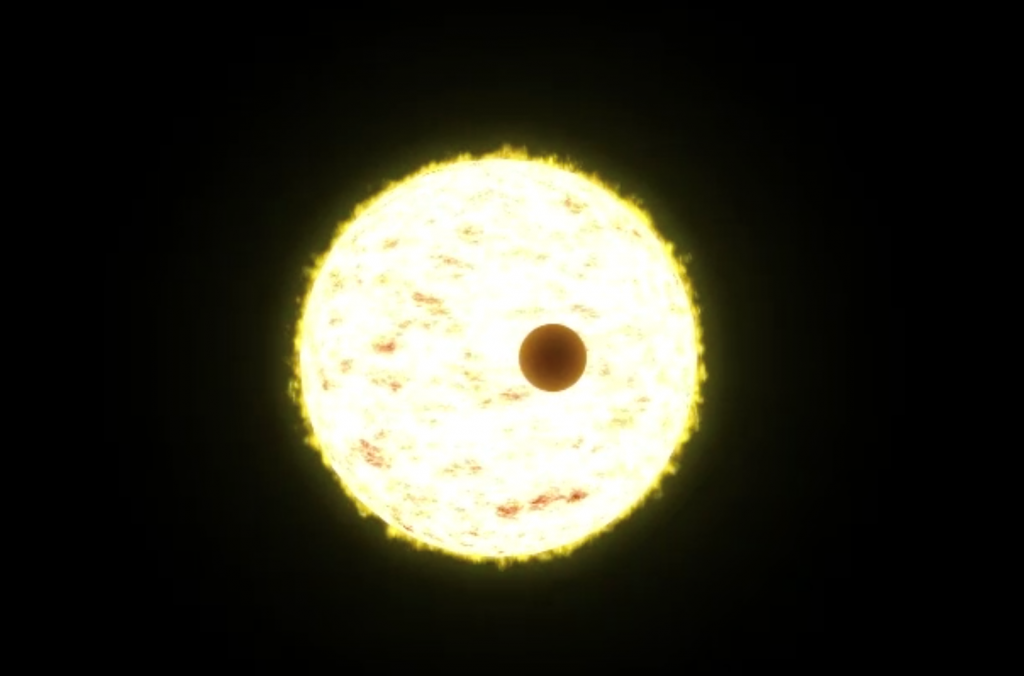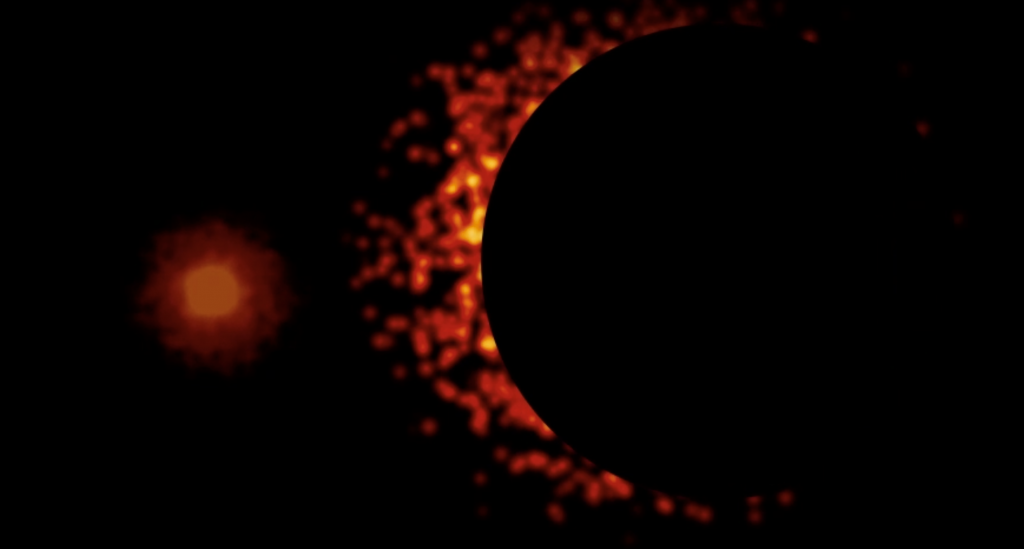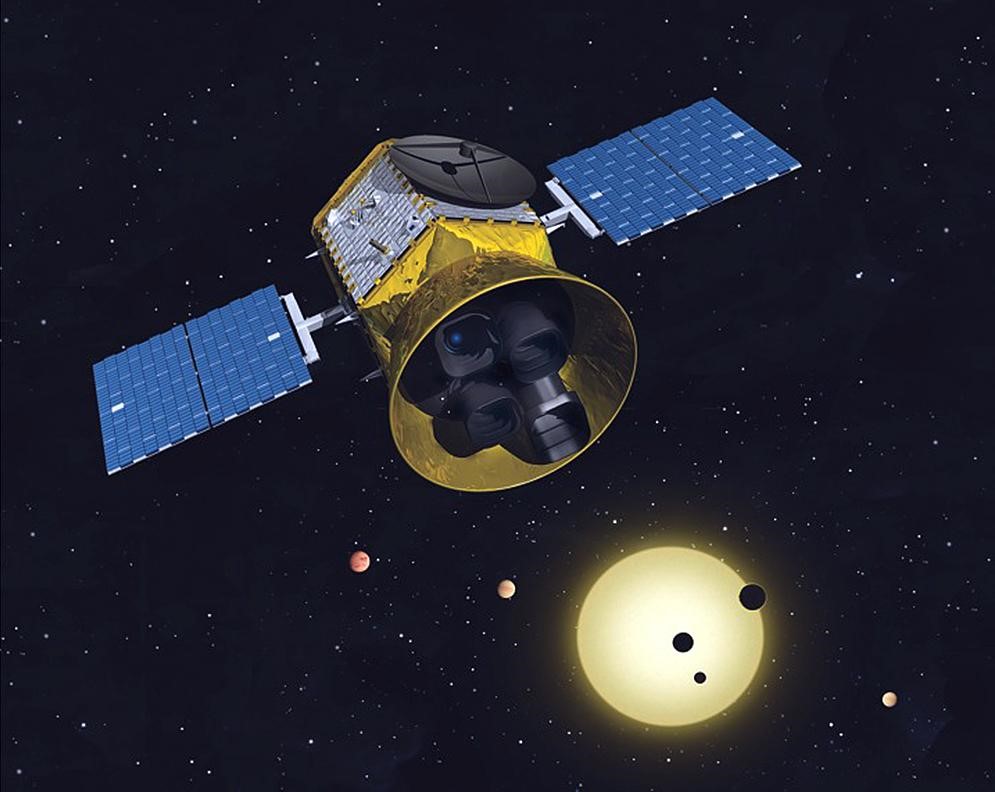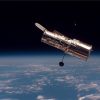How the Very Large Telescope Uses Direct Imaging to Find Exoplanets
The European Southern Observatory’s VLT in Chile uses techniques like adaptive optics, coronagraphs and differential imaging to take direct pictures of planets far, far away.
In the Southern constellation Musca, there is a star called TYC 8998-760-1. It is a fairly young star, only 17 million years old, and a lot like our own Sun. It’s just beginning to form its planetary ecosystem, making it a prime target for researchers to study how solar systems like our own form.
And, for the first time ever, we can take a direct look at how that process works.
In July 2020, researchers from the European Southern Observatory (ESO) announced that they had directly imaged two planets orbiting TYC 8998-760-1. Using the Very Large Telescope (VLT) in Chile, ESO observed two gas giants around the star, the first time ever that humanity has directly imaged multiple exoplanets around a Sun-like star. “This discovery is a snapshot of an environment that is very similar to our Solar System, but at a much earlier stage of its evolution,” said Alexander Bohn, a PhD student at Leiden University in the Netherlands, in a press release by the ESO.
Direct imaging of exoplanets (a planet which orbits a star outside our own solar system) is extremely difficult. While researchers have discovered thousands of exoplanets in the last couple of decades, nearly all of them were found with indirect measuring techniques, such as radial velocity or the transit method. According to NASA, only 50 exoplanets have been discovered with direct imaging. Taking direct images of multiple planets around a Sun-like star is a major accomplishment and the technique will allow scientists greater understanding of exoplanets.
How Exoplanets Are Discovered
To understand why the direct imaging of the planets around TYC 8998-760-1 is so remarkable, it helps to understand something about how exoplanets are discovered.
Scientists use five different methods to discover exoplanets:
- Transit method
- Radial velocity
- Astrometry
- Gravitational microlensing
- Direct imaging
The transit method has found the most exoplanets to date (3,187 planets, according to NASA). With telescopes, humans can measure the luminosity (the intrinsic brightness) of faraway stars. The transit method looks for exoplanets that are moving between our viewpoint on Earth and a star. When a planet transits in front of a star it blocks some of the star’s light. Scientists measure the decrease in luminosity to learn things about the planet, such as how big it is and how far away it is from the star. The star’s light even highlight’s the planet’s atmosphere, allowing researchers to use spectroscopy to understand its chemical makeup.

Radial velocity has found 810 exoplanets, the second most after the transit method. Radial velocity is all about gravity. A star has a massive gravity field, capturing planets and other celestial objects in its orbit. But planets have their own gravity and it affects how the star itself moves. The gravitational effect of the planet creates what astronomers call, colloquially, a “wobble” on a star. Measuring that wobble, through what is called the “Doppler shift” is what allows scientists to discover if a star has planets in its orbit. Radial velocity was the first method used to find exoplanets and is often used to confirm data from other methods of exoplanet discovery.
Astrometry is similar in that it uses Doppler effects and wobble to determine the presence of a planet around a star. But, unlike radial velocity, astrometry attempts to discern an exoplanet by how it affects a star’s position in the sky in relation to other stars. It’s incredibly difficult to measure since the movement is so small, and can only be done with instruments in space, as Earth’s atmosphere distorts and bends light. Only one exoplanet has been discovered with astrometry.
Gravitational microlensing has been used to find 96 exoplanets. It’s a concept straight from Albert Einstein. Basically, big objects—like stars and planets—have a lot of gravity. And the presence of lots of gravity warps space. Thus, when light encounters these big objects, gravity can distort the light and change its direction.
The interesting outcome of this interaction between gravity and light is that sometimes it acts like a magnifying glass, allowing us to take a much closer look at a faraway object than we could have with traditional instruments alone.
“Gravitational microlensing happens when a star or planet’s gravity focuses the light of another, more distant star, in a way that makes it temporarily seem brighter,” says NASA.
Direct imaging is the only method that directly captures pictures of exoplanets orbiting distant stars. The technique leads to actual visible evidence and gives scientists a greater amount of data about the planet, such as its orbit, and the composition of its atmosphere. It’s also exceptionally difficult to do.
“The major problem astronomers face in trying to directly image exoplanets is that the stars they orbit are millions of times brighter than their planets,” says NASA about the difficulty of direct imaging. “Any light reflected off of the planet or heat radiation from the planet itself is drowned out by the massive amounts of radiation coming from its host star. It’s like trying to find a flea in a lightbulb, or a firefly flitting around a spotlight.”
Scientists overcome the problem of a star’s light outshining the albedo of an exoplanet in two ways. One is called a coronagraph, which is a device within a telescope that blocks the light from a star before it reaches the telescope’s sensors. The other is called a starshade, which is an instrument to block the star’s light before it enters the telescope and is best suited to space-based instruments.

So far, direct imaging is best used to find planets around brown dwarf stars that have low luminosity, or large planets orbiting long distances from young stars, such as is the case with the two exoplanets orbiting TYC 8998-760-1. The closest planet orbits 160 astronomical units (one unit is measured as the distance between the Earth and the sun) from the star and is 14 times the mass of Jupiter. The outer planet orbits at 320 astronomical units. For comparison, the furthest planet from the Sun—Neptune—orbits at 30 astronomical units.
How the VLT Finds Exoplanets
The Very Large Telescope has an instrument called Spectro-Polarimetric High-contrast Exoplanet Research (SPHERE) that is designed to directly image exoplanets.
Light leaving a star is unpolarized, “meaning that the electromagnetic waves oscillate randomly in different directions,” according to the ESO. But, when that light is reflected off a surface such as a planet, it becomes polarized which means that it then oscillates in a well-defined plane. For instance, polarized sunglasses work to block polarized sunlight from our vision, which helps give us a high-contrast view of our surroundings with less glare. What SPHERE does is use a variety of instruments to try and block the light of the star, while picking out the polarized light coming from potential exoplanets.
SPHERE uses three different stages to take direct images of an exoplanet:
- An adaptive optics system that is used to correct the turbulent effects of Earth’s atmosphere to deliver sharp images, as if the telescope were imaging from space.
- A coronagraph used to block out light from the star to increase contrast of the light from the exoplanet.
- A technique called differential imaging that exploits the differences between light from a planet and light from a star in terms of color and polarization. The objective, easier said than done, is to block out the light of the star to leave only that from the planet.
SPHERE is equipped with three subsystems that help it take specific measurements.
- ZIMPOL, a special camera that can make sharp images and measure polarization of visible light in the near infrared spectrum (600 to 900 nanometers). It is used to detect the reflected polarized light coming from gas planets or dusty discs orbiting stars.
- IRDIS, a camera that works in the near-infrared wavelengths, from 0.9 to 2,300 microns. It is used to perform differential imaging to see bright planets that are young and give off their own light.
- IFS, a near infrared spectrograph that works with IRDIS to see the light spectrum given off from an exoplanet. It is used to detect the composition of the atmospheres of giant planets.

How Teledyne Enables Exoplanet Discovery
Teledyne has decades of experience in enabling astronomers to study the cosmos. Teledyne’s charged couple devices (CCD) with on-chip analogue to digital convertors (ADCs) provide extreme sensitivity and fast response times and allow for highly sensitive and advanced imaging technology in both ground-based and space telescopes. Teledyne sensors have been at the heart of many astronomical discoveries.
Teledyne Imaging CCDs and infrared MCT FPAs are found in almost every space borne telescope for outer space astronomy missions. The instruments that use our imaging technology played a key role in capturing data and images that have found billions of hidden planets and revealed according to NASA’s Kepler Space Telescope mission that there is more planets than stars.
A vital component to this science is the ability to capture detailed images and spectroscopic data across the X-ray, visible, UV, NIR and infrared (IR) spectrum. During 30 years involvement with the highest profile space science projects, the detailed scientific information and images obtained with Teledyne Imaging’s CCD and CMOS sensors, IR FPAs, cameras and optics are helping us understand more about the Universe. Key enabling device characteristics that unlock the performance needed for these missions include low noise, very low dark current, deep depleted MCT, large pixel sizes, backside illumination, back-thinned detector substrates and optics and coatings that improve the quantum efficiency of imaging systems.
SPHERE is equipped with state-of-the-art CCDs and infrared detectors supplied by Teledyne Imaging Sensors and Teledyne e2v. The Multi Object Optical and Near-infrared Spectograph (MOONS) is another project at the VLT that uses sensors from Teledyne Imaging. MOONS was and designed to study “galactic archeology” such as the formation of stars and galaxies.
Teledyne components can be found in nearly every major land and space-based telescope, including forthcoming projects such as the Vera C. Rubin Observatory (to be completed in 2021), the Extremely Large Telescope (ELT, expected to be completed in 2025) in Chile, and the Euclid space telescope (expected launch in the second half of 2022).
The ELT’s adaptive optics system will feature Teledyne e2v’s CIS124 CMOS sensor.
“Each sensor, with a size of 800 x 800 pixels, will employ Teledyne e2v’s renowned CMOS technology,” the ESO said in a press release. “Their extreme sensitivity and fast response will permit the ELT’s adaptive optics systems to make tiny adjustments around 700 times a second to compensate for the variations in Earth’s atmosphere. This will ensure that the resulting astronomical images—of exoplanets, distant galaxies and everything in between—will benefit from the highest resolution possible.”
The Euclid space telescope’s mission will be to map the geometry of the universe, studying dark matter and dark energy to try and understand the history of the universe and its future expansion. Euclid will have two primary instruments to help it observe deep space—a Visual Imager (VIS), and Near Infrared Spectrometer and Photometer (NISP)—that will, in part, be based upon Teledyne’s application specific integrated circuit design.
Teledyne also helped to equip the most prolific planet-hunting telescope in history with the Kepler spacecraft. Kepler found more exoplanets than any other telescope. It will soon be succeeded in this mission by a new super powered planet hunter, PLATO (PLAnetary Transits and Oscillations), which hopes to launch in 2026. PLATO is built around 26 telescopes, each bearing four 20 Mpixel CCD Bruyéres image sensors that serve as the basis for a single satellite platform.
“The Kepler spacecraft vastly increased the number of known exoplanets through its large focal plane of Teledyne e2v sensors,” said Dr. Paul Jordan, Chief Engineer – Astronomy at Teledyne (since retired), in 2019. “The Gaia satellite is also expected to detect thousands more.
The European Space Agency’s (ESA) CHEOPS (CHaracterising ExOPlanet Satellite) mission, has a Teledyne e2v CCD47-20 image sensor at its core. NASA’s Nancy Grace Roman Space Telescope (formerly WFIRST) and James Webb Telescope missions will deploy Teledyne Imaging Sensors H4RG-10 and H2RG infrared detectors, respectively, as well as Teledyne e2v CCD 311-20.
Looking Forward In Our Time
Despite (or because of) the faint signals that are being collected, it will still take years and even decades to fully understand the exoplanet data that has been created. Partnerships between different research groups mean that diverse data can be consolidated and compared to make further discoveries.
For example: while the VLT has been crucial in discovering exoplanets, it is by no means the only effort. NASA’s Transiting Exoplanet Survey Satellite (TESS), an exoplanet-hunting space telescope just wrapped up its primary mission, identifying 66 confirmed exoplanets. An additional 2,100 candidates now warrant further investigation. TESS is done with its primary mission, but its search for strange new worlds goes on with an extended mission that runs through September 2022.

There is still so much to do. “Even though astronomers have indirectly detected thousands of planets in our galaxy, only a tiny fraction of these exoplanets have been directly imaged,” says co-author Matthew Kenworthy, Associate Professor at Leiden University, “direct observations are important in the search for environments that can support life.” Further observations will enable astronomers to test whether directly-imaged planets formed at their current location distant from the star or migrated from elsewhere. ESO’s ELT will also help probe the interaction between planets within the same system.



 Looking UP: Space-Based Satellites That Feed our Fascination with the Universe
Looking UP: Space-Based Satellites That Feed our Fascination with the Universe  Space Archaeology
Space Archaeology 